I admit I’m an espalier novice. When I first saw an espalier tree (I’m guessing on “Gardener’s World” or in a British gardening magazine), I thought I had stumbled upon some great European secret. Silly me. Espalier is happening everywhere, and it’s definitely growing in popularity in North America.
And why wouldn’t it? It’s beautiful, but it is also a great way to get excellent fruit production, particularly if you garden in a small space.
For those yet to fall in love with espalier—and I think I can guarantee that you will—it’s simply a method of growing something in a two-dimensional plane. Fruit trees are the most common espaliers, their branches trained and pruned to grow on a flat plane rather than a typical tree shape.
My first real espalier tree was the Asian pear I planted along the fireplace a few years ago. (There was a somewhat sad attempt I made with an apple tree whip before that but I planted it in an area that is now heavily shaded and it’s not doing well.) I was inspired by an Asian pear growing on Margaret Roach’s house.
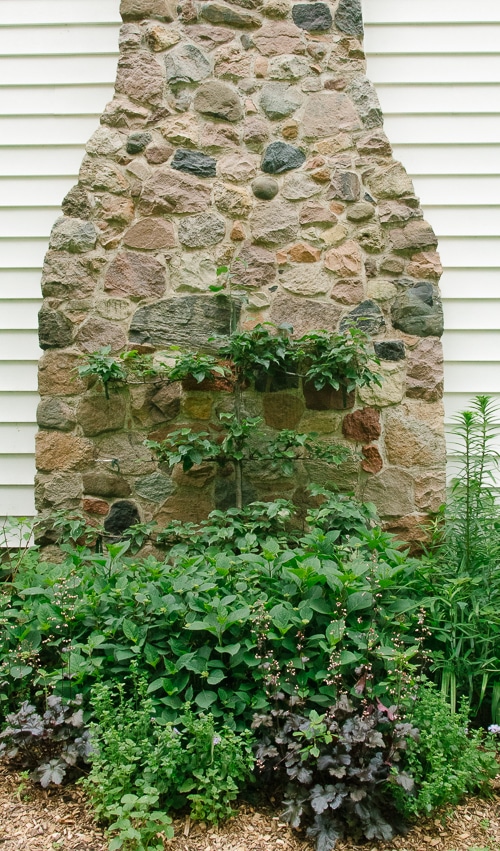
It looks beautiful and adds what I think is the perfect structure in that area, a place where I struggled to find the right thing for many years. It is not at all productive, in part because it requires a pollinator and up until this spring, it didn’t have one.
The new vegetable garden was an excellent opportunity to really dig into my espalier fascination. I added a ‘Liberty’ apple on one side, chosen for its disease resistance. Opposite that I planted a ‘Bartlet’ pear, which should be a good pollinator for the Asian pear.
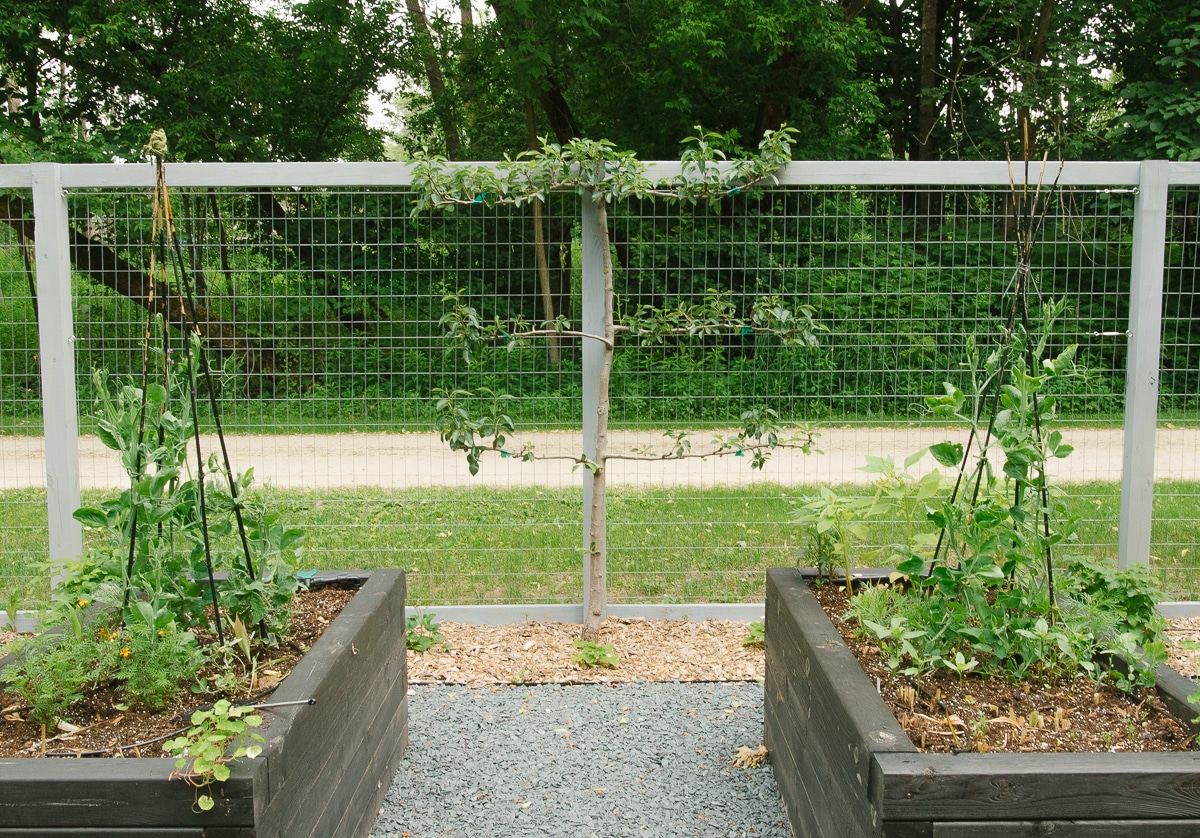
Not content to stop there, I’ve also planted currants, which I’m growing as a single stem up to a guidewire (the same one used for the bottom tier of the trees), where I’ll top it and all it to stretch out its arms along the wire. It’s an espalier currant, an idea inspired by Lee Reich.
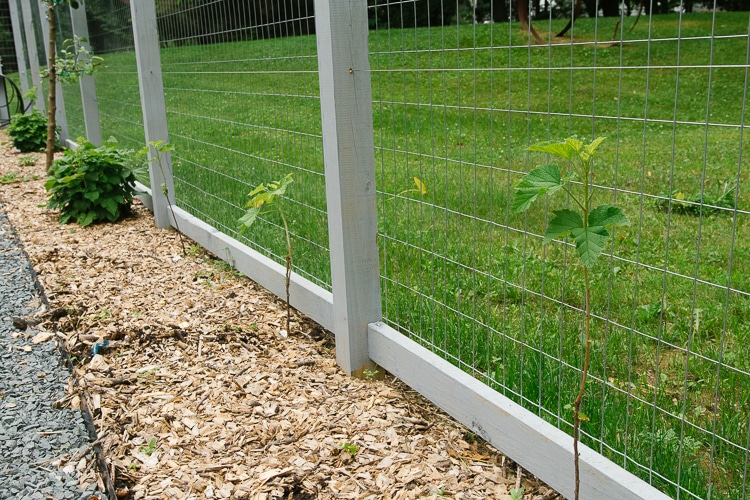
I’m planning to grow a Belgian fence—espalier trees trained into overlapping V shapes that create a diamond pattern—along the back of the fence. While I bought pre-trained espalier trees for the sides, it looks like I’m going to be on my own for the Belgian fence, as few nurseries have heard of them or sell them.
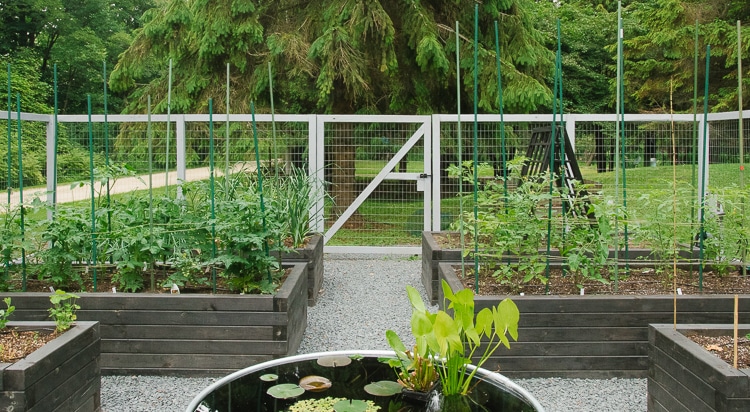
I’m not generally very patient when it comes to getting the look I want in a garden, but there’s an upside to starting from scratch on this. If I were to buy pre-trained trees not only would they be incredibly expensive, but I’d have very few varieties to choose from. Since I don’t necessarily need a ton of fruit, I’m thinking I may use crabapples for the fence and go for a great flower show.
In order to start the fence, I’ll need about a dozen sturdy tree whips (essentially small, unbranched trees). After planting, I’ll top them all at about 2 feet high, or wherever I decide I want the Vs to start. I can guarantee you this gut-wrenching procedure will occur after a lengthy cocktail hour. From there, I’ll tie the new shoots into support stakes to make them grow at the correct angle.
Sidenote: If you happen to know of a source where I could find a selection of crabapple whips, please let me know.
Fruit trees and even crabapple trees are pretty typical for espalier use, but as I discovered at Chanticleer Garden and Longwood Gardens, there’s no need to be limited by variety. I think almost any tree or vine could be pruned in an espalier fashion, as evidenced below.
This evergreen spruce at Longwood Gardens was a sight to behold.
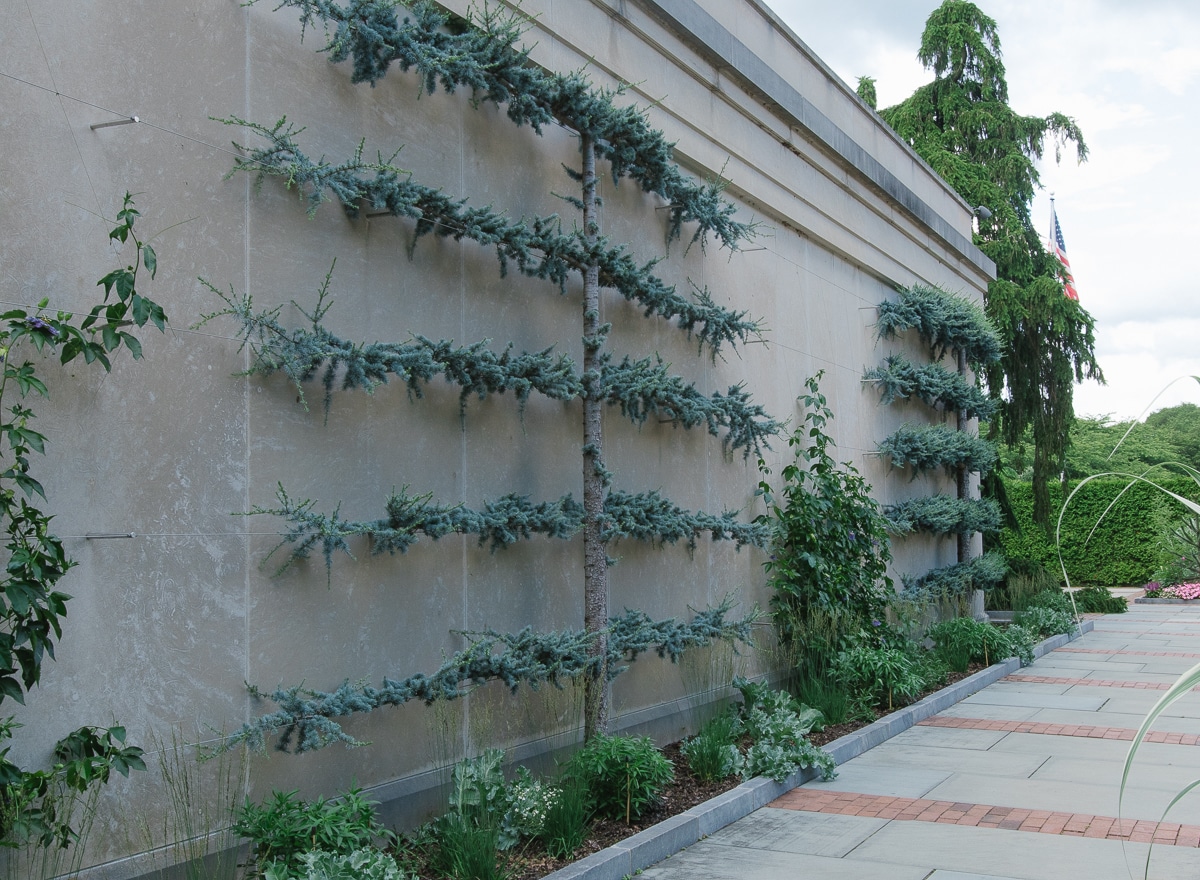
Espaliers were everywhere at Chanticleer. Some took on a more natural look. Although that seems like an oxymoron, it was quite lovely.
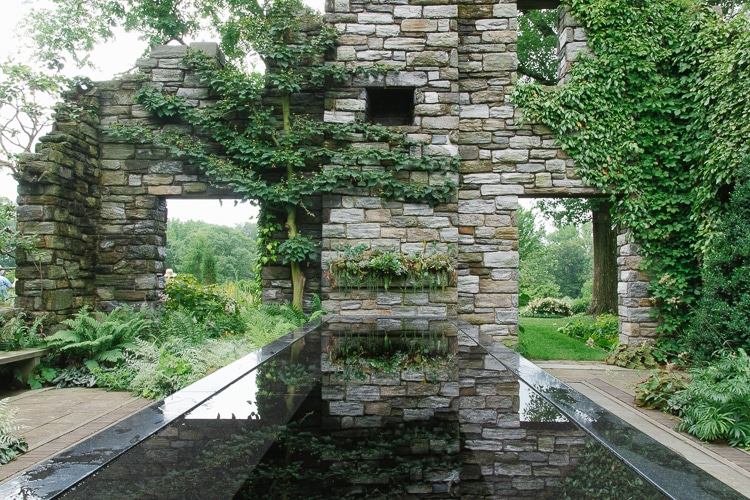
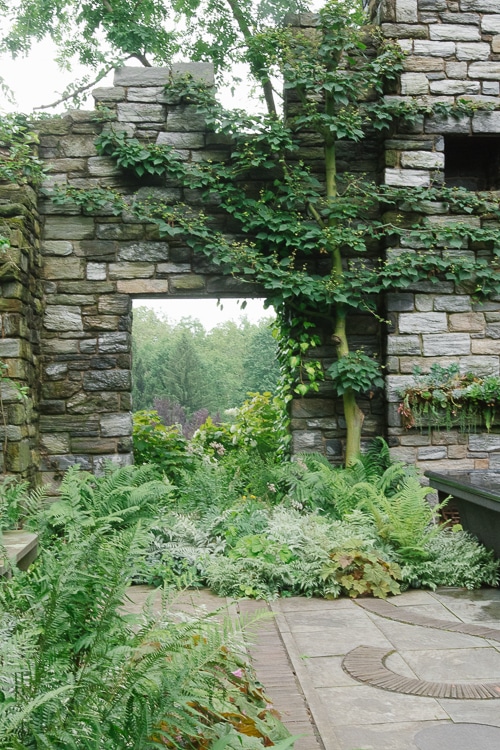
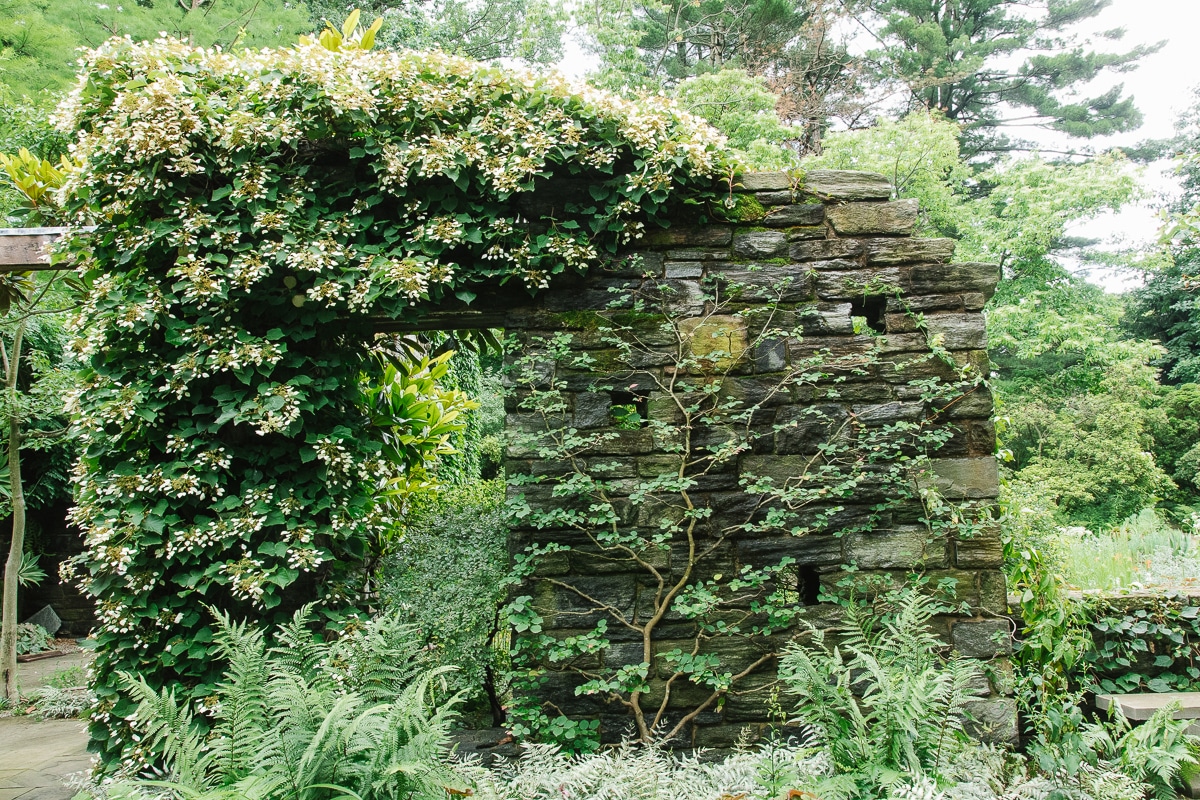
This one had very little foliage but the framework of the tree was so beautiful.
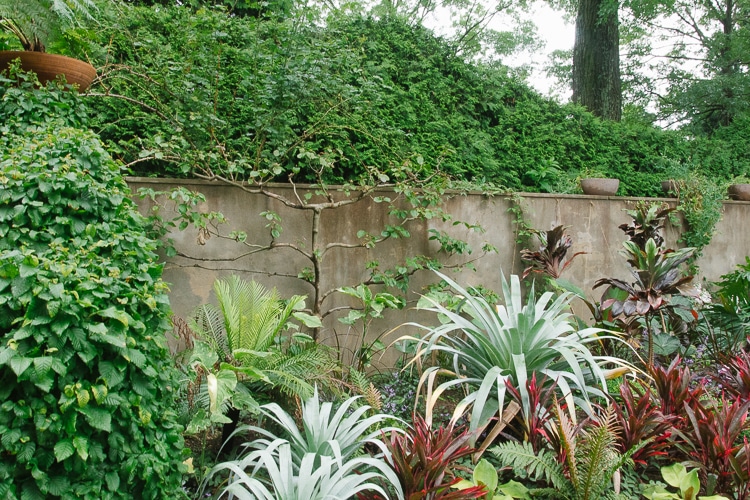
Here’s a different take on espalier: A tree growing a bit like a vine.
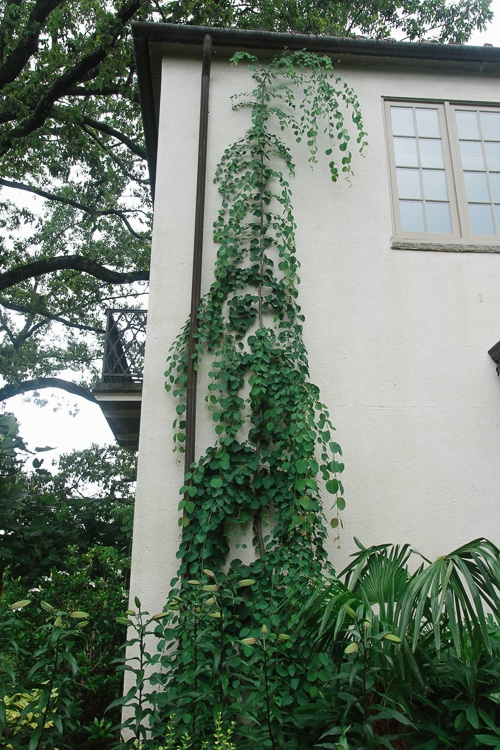
And at Stoneleigh, a relatively new public garden, I found this beautiful informal redbud espaliered on a lovely stone foundation.
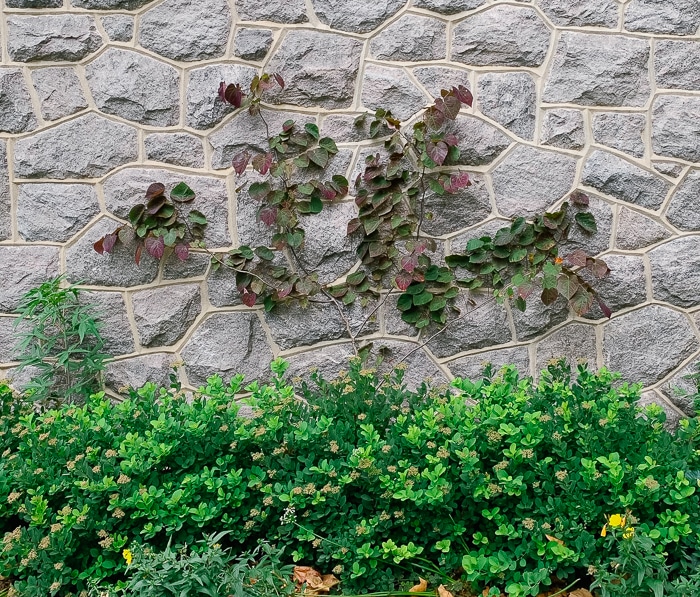
Are you an espalier fan yet?
What would you like to know? Search, or jump to categories below.